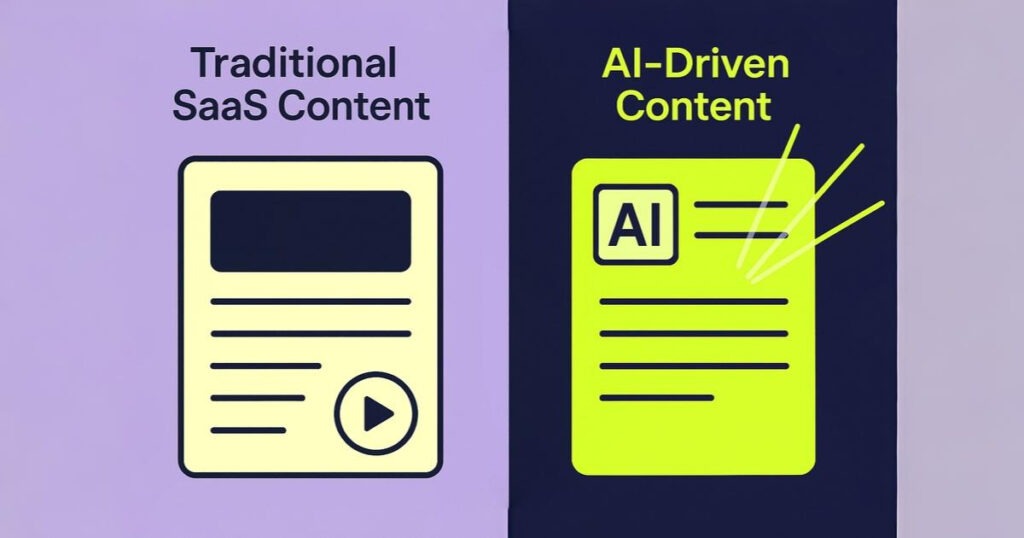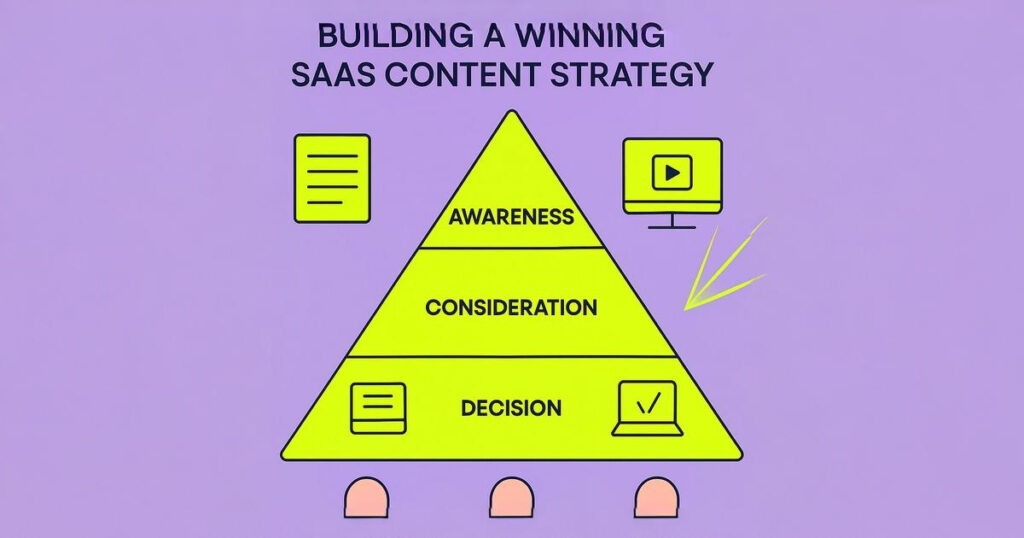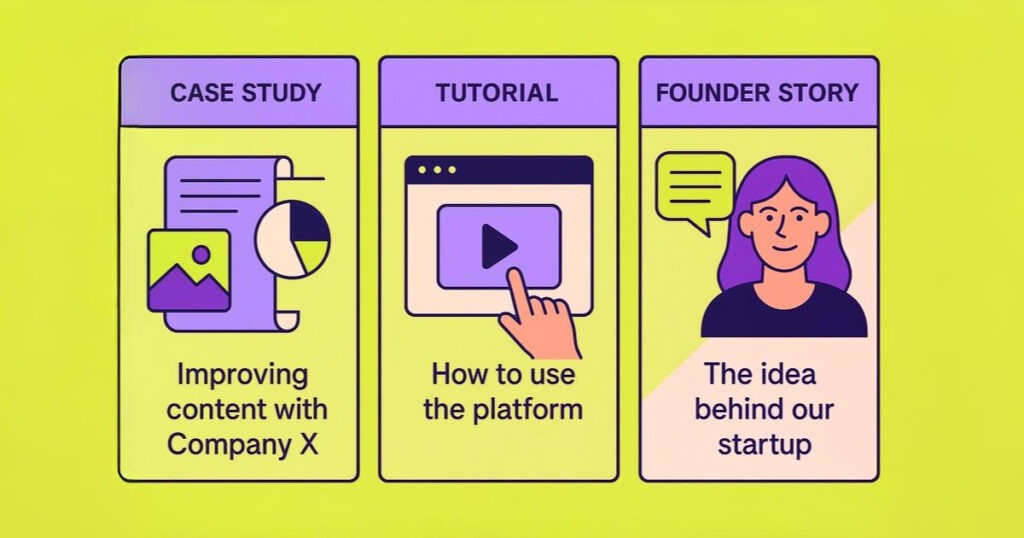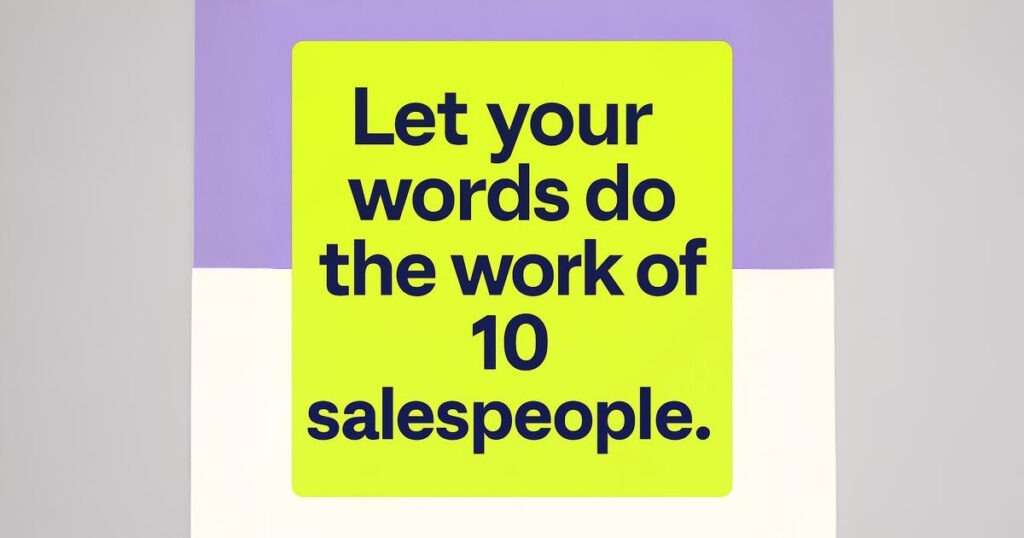
Ultimate Guide to Content Marketing for AI SaaS Startups
Let me say this loud and clear: having a powerful AI SaaS product isn’t enough. Not anymore.
You can build something brilliant. Something that can change the way businesses think about content. But if your ideal audience doesn’t understand what your tool can do for them, it’ll stay hidden behind a fog of confusion and missed opportunities.
That’s precisely why content marketing for AI SaaS is no longer optional. It’s your secret weapon to turn skeptics into superfans, decision-makers into champions, and curious visitors into paying users.
I’ve spent years helping AI SaaS founders bridge this gap. I’ve been inside the mind of the overwhelmed startup founder and the skeptical content marketer. And I’ve seen how a well-executed SaaS content strategy can transform a product’s entire trajectory.
In this guide, I’m going to walk you through everything you need to know. We’ll unpack what makes content effective in this space, how to position your AI tool, and why storytelling and strategy are your best allies.
Are you ready? Let’s dive in.
Understanding Content Marketing in the Context of AI SaaS
Before you can build a content marketing machine, you need to understand the unique dynamics of the AI SaaS space. Unlike traditional SaaS, your product combines cutting-edge innovation with complex messaging. That’s a different ballgame.

What is Content Marketing for SaaS?
It’s more than just publishing blog posts. Content marketing for SaaS is a strategic approach to attracting, educating, and converting your ideal users. You do this through value-driven content that speaks directly to their pain points.
You’re not selling a physical product. You’re selling solutions. You’re selling transformation. And in a space where features often sound too technical or abstract, content becomes your translator. It turns complexity into clarity.
How Does AI Change the Content Marketing Landscape?
With AI in the picture, the game changes again.
Your tool is probably solving a problem faster or more efficiently than a human can. But with that promise comes skepticism. AI still feels like a black box to many.
So your job isn’t just to say, “We’re AI-powered.” It’s to explain why that matters. That’s what AI SaaS marketing is all about. It means humanizing the tech, proving its worth, and creating trust through every word.
Why is Content Marketing for AI SaaS Startups Crucial?
Here’s the truth: without a strong content presence, even the best AI-powered tools risk fading into obscurity. If you want your brand to be seen, understood, and chosen, content is your loudest, clearest voice in the market.

Content Builds the Bridge Between Curiosity and Conversion
Most of your audience won’t convert after the first touchpoint. In fact, studies show it takes an average of 7 to 13 interactions before a lead becomes a customer.
Content is how you nurture those interactions. It allows you to stay visible, educate consistently, and establish credibility before your audience even speaks to sales.
Early Traction Isn’t Optional—It’s Survival
If you’re a seed-stage startup, your first 100 users are everything. They validate your product. They give you case studies. They help you grow.
That’s why AI startup marketing must lead with content that builds awareness fast and creates demand before your product even matures.
Trust me, when done right, content is your highest ROI channel in those early days.
Building a Winning Strategy for Content Marketing for AI SaaS
Strategy is the backbone of any successful content engine. In this section, we’ll map out what a strong SaaS content strategy looks like and how you can tailor it to your growth stage, audience, and unique voice.

Start with the End in Mind
Before you write a single sentence, define what success looks like. Are you optimizing for signups? Educating early adopters? Driving demo bookings?
Each goal requires a different kind of content. A solid SaaS content strategy ensures your content doesn’t just look good; it moves the needle.
Match Content to the Customer Journey
Most AI SaaS teams I work with skip straight to “How-to” articles. But what about top-of-funnel education? Or bottom-of-funnel decision support?
You need content at every stage:
- Awareness: Thought leadership, problem-based blogs
- Consideration: Use cases, comparisons, webinars
- Decision: Case studies, testimonials, product deep-dives
When these are aligned, magic happens.
Don’t Skip the Planning Frameworks
A strategy isn’t a spreadsheet of blog titles. It’s a living system. Use content calendars, pillar-cluster models, and repurposing workflows. Plan like a publisher, not a blogger.
Defining and Attracting Your Ideal Audience
You can have the best content in the world—but if it doesn’t speak to the right people, it won’t move the needle. Let’s get intentional about who your content is for and how to make it resonate.
Understand Who You’re Talking To
If you’re speaking to everyone, you’re convincing no one. You need to know your ICP (Ideal Customer Profile) like you know your favorite coffee order.
In many AI SaaS brands, it can be a founder or marketing lead juggling a million tasks, unsure how to communicate a complex product.
That’s why I always create content with empathy first. Your content should say, “We see you. We get you. And here’s how we help.”
Speak Human, Not Just “AI”
Don’t drown your content in jargon. Yes, your product uses LLMs or predictive analytics. But your customer wants to know, “Will this save me time?” or “Will this help me get more leads?”
Simple language isn’t dumbing down. It’s smart communication.
Content Formats that Convert in the AI SaaS Space
Great content educates and persuades. In this section, I’ll break down the formats that work exceptionally well for AI SaaS products, from use-case walkthroughs to founder stories.

Don’t Just Inform—Demonstrate
Your audience doesn’t just want to know what your tool does. They want to see it in action. That’s where content formats come in.
Some high-impact options include:
- Use-case articles that mirror real-world problems
- Product-led blog posts (with actual feature walkthroughs)
- Case studies showing measurable improvements in time, revenue, or output
These formats drive more conversions because they prove, not just promise, results.
Storytelling Wins Every Time
Your users are emotional decision-makers—even in B2B.
Share founder stories. Document behind-the-scenes product decisions. Show how another struggling team like theirs succeeded using your tool.
That’s how you create an emotional connection. And emotional connection creates loyalty.
SEO and AI SaaS: Getting Discovered by the Right People
Being brilliant is only the starting point. You also need to be discoverable. SEO is still one of the most effective long-term growth channels, primarily when used strategically in the context of AI SaaS marketing.
Keywords Are Just the Beginning
When most founders think about SEO, they immediately jump to keywords. And yes, keywords matter. They help your audience find you. They guide your content structure. They tell search engines what your product is about.
But here’s the thing: keywords are only one part of a much larger picture.
Real SEO success for AI-driven SaaS startups goes beyond sprinkling search terms into your blog posts. It’s about intent. It’s about clarity. It’s about showing up when your dream customer types in a question, and having the exact answer they didn’t know they needed.
That’s why I treat SEO as a conversation starter. Your content must meet your audience where they are, especially in a space as nuanced as AI. People aren’t just searching for features. They’re searching for outcomes, for solutions, for something that feels custom-fit to their unique problem.
That’s what makes the difference. You’re not just optimizing for clicks. You’re optimizing for connection. For relevance. For trust.
Build Authority Through Consistency
There’s a reason I tell founders to treat their content like a business function, not a creative side hustle. Showing up consistently builds familiarity, and familiarity builds trust. The moment you start publishing regularly, your brand stops being a stranger and starts becoming a resource. People remember who shows up.
And here’s the proof: companies that blog consistently generate 67% more leads than those that don’t. That’s momentum you can measure. Consistency signals stability, expertise, and intent. It’s not just about algorithms; it’s about audience perception. And in a crowded AI SaaS space, perception is everything.
Using AI to Scale and Optimize Content Creation
You’re building an AI product. So, why not use AI to develop your content? Let me show you how to use AI without losing the soul of your brand voice.

Yes, You Can Use AI in Your Content Process
You don’t have to choose between human and machine. The best teams use both.
AI tools can help you:
- Generate content outlines
- Personalize email sequences
- Summarize long interviews
But remember, AI should assist, not replace, your brand voice and strategic thinking.
Human Creativity Still Wins
Even with the best GPT-powered tools, your content needs soul. It needs storytelling. It needs context.
That’s where your brand voice, tone, and positioning matter. And that’s why I still advocate for founder-led or marketer-guided content. Treat AI as your assistant, not your author.
Distribution Channels That Work for B2B AI SaaS
Publishing content is only half the job. Distribution is where the real visibility happens. Let’s explore the channels that consistently drive ROI for B2B SaaS content efforts.
LinkedIn is a Goldmine—If You Use It Right
LinkedIn isn’t just for job seekers; it’s where your audience hangs out daily. Founders, marketers, and investors are all scrolling, skimming, and searching.
However, most AI SaaS brands are invisible because they treat LinkedIn as a noticeboard instead of a conversation. That’s a missed opportunity.
You don’t need to go viral. You need to be valuable. Share short stories. Document product lessons. Repurpose your blog insights into punchy, people-first posts. Show up with personality and consistency.
When your audience sees you as both credible and relatable, they’ll stop scrolling and start paying attention. That’s how you build real traction.
Tap Into Startup Ecosystems
Startup communities are where your early believers live. These spaces—Product Hunt, Slack groups, Indie Hackers—are more than launch pads. They’re trust accelerators.
When you show up with value-driven content, not just another pitch, people notice. They click, they share, they talk. And those conversations spread faster than any ad budget can push.
I’ve seen tiny startups gain massive traction just by consistently showing up in the right ecosystem. Share behind-the-scenes posts. Drop a powerful insight. Answer real questions. These micro-moments build momentum.
As we all know, momentum is the secret weapon of every underdog AI SaaS brand trying to break through.
Don’t Underestimate Email
Email might feel old school, but it’s still one of the most powerful tools in your content arsenal. While everyone is chasing algorithm changes and viral posts, email gives you something rare: direct access.
You’re not renting space on someone else’s platform. You’re building a channel you own.
Use it to nurture, not just announce. Share bite-sized insights, product updates, and behind-the-scenes stories. Make it personal. Make it valuable.
When done right, your emails won’t just get opened. They’ll get forwarded, bookmarked, and remembered. In a noisy world, showing up consistently in someone’s inbox is a quiet superpower.
Common Mistakes and Best Practices for Content Marketing for AI SaaS Startups
There are a lot of content marketing traps out there. And I’ve seen even brilliant teams fall into them. This section will show you what to avoid and what to double down on.
Common Pitfalls I See All the Time
- Publishing content with no goal or funnel strategy
- Writing for Google, not humans
- Ignoring middle and bottom-of-funnel content
- Failing to measure what matters
Each one is a silent killer of ROI.
Best Practices to Steal Today
- Always include a CTA—even if it’s soft.
- Reuse and repurpose content across formats.
- Speak to real user pain, not internal assumptions
- Use data and storytelling together for maximum impact.
When you follow these consistently, AI SaaS marketing becomes less about “creating content” and more about creating momentum.
FAQs: Content Marketing for AI SaaS Startups
Do you still have questions? I’ve compiled some of the most common ones I hear from founders and marketing leads, with answers rooted in real-world experience.
How to market an AI SaaS startup?
Start by clarifying your message. Then use B2B SaaS content to attract and educate your niche. Layer in SEO, thought leadership, and strategic partnerships.
Why is content important for SaaS?
Because SaaS is complex. Content simplifies. It builds trust, shortens sales cycles, and helps customers see your tool as the right solution.
How does AI improve marketing results?
AI accelerates research, automates repetitive tasks, and uncovers insights faster. But its real power lies in personalization and scale, when guided by a smart strategy.
What are some SaaS content examples?
Think of product-led blogs, tutorials, case studies, onboarding guides, LinkedIn thought posts, customer Q&As, and webinars.
How often should I publish?
Quality trumps quantity. But consistency is non-negotiable. Start with 2–4 posts a month, then scale as your workflow stabilizes.
Your Content Is the Product, Too
Your AI tool is powerful, but it’s your content that gets people to care. In the early days, your message is your product. It’s what earns attention, builds trust, and creates believers before the first sales call ever happens.

You don’t need louder messaging—you need sharper clarity. Start with empathy. Lead with simplicity. Show them what’s possible with your solution.
Let your words educate, inspire, and convert. Teach boldly. Tell your story with heart. And when you’re ready to make your content work like your smartest salesperson, reach out to me, let’s build something unforgettable, together.
I’m always here for you.
